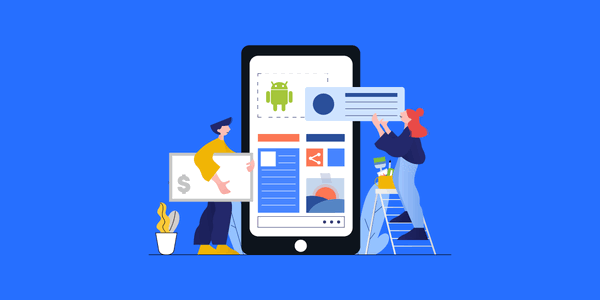
1. Business Analysis:
Business analysis is the face of any mobile app development. Generally, an effective business analysis phase consists of specific actions that you should incorporate in your app. This step aims to understand the client’s app expectations, including functional requirements, target platform, development method, etc.
A successful business analysis often begins with:
- Analyze the target platform preference (iOS, Android, or both)
- Capturing detailed functional requirements
- Choosing a development method (native, hybrid, or cross-platform)
Now, let’s know more about the different development methods:-
Native development: If you want to build a high-performance application with a rich user experience and varied logic but can be easily updated and enhanced with new functionality in future releases.
Hybrid Development: Implementing a hybrid app allows you to use one programming code for different platforms. It’s designed to be compatible with all devices and operating systems with the additional advantage of cost-effectiveness and faster development.
Developing a hybrid app is likely to save you up to 50% of the original native app cost.
Cross-platform development: If you have a short window to test the idea and hypothesis in the app market or you need software products or services that will work on several operating systems, this is the way to go. It’s also more cost-effective since you can create one app for both platforms.
2. UX Planning and Design:
It’s essential to keep in mind the client’s taste and preferences, but even more important is the target audience. After successful approval of the main screens’ design, we can plan and create the project’s style guide and render the rest of the screens. If the client has a brand book or a unique corporate style, it’s important to follow it and make sure it’s well incorporated.
After you have specified the functional requirements of your prospective app, your chosen vendor can begin the design process.
The first stage is User experience design, usually done in collaboration with a business analyst by a UX professional. Next, the team creates fictional profiles of your app’s future users, also known as personas, and their engagement behaviors with the app or user scenarios. Personas and scenarios both aid a UX designer in determining what people desire to accomplish when using your product. This understanding helps the designer to give interaction flows between a user and the mobile app with the detailed shape of wireframes, either hand-drawn or digital.
In the end when you have a properly defined functional requirement, you’re set to move on to the development stage. The goal here is to ensure that the app provides an excellent user experience, making sure the app is interactive, user-friendly, and intuitive.
This additionally allows the designer to create tailored wireframes to ensure interactive flows among both the users and the app. The wireframes then go through a series of UX testing to ensure issues are eliminated while they are still at their weakest.
3. UI Design Prototyping
The tailored wireframes created during the UX designing stage are the basis upon which the UI designers begin their development.
During this stage, they look into the company’s style guide (document containing the company’s design standards including the color, font, and branding rules), combine its platform-specific guidelines, as well as the latest trends, and turn ordinary wireframes into hi-fi digital prototypes.
Here, they create mockups that display the app’s functionality using stationary designs and transform them into click-through prototypes with tools like Figma and Invision.
The prototypes are essential for simulating the UX and the app’s workflow that is expected from the finished product.
After the prototype is completed, the User Interface designers contact the company for reviews and suggestions.
It’s highly important to ensure that you check out every part of the design and point out flaws that may have negative effects on the app so you won’t have to spend extra time and capital in the future.
Additionally, some of these errors may be quite difficult to fix and thus, it’s important to share all thoughts and doubts at this point to plan actions ahead.
When the prototype is complete, the UI team will contact you and request your feedback. At this time, make sure to express all of your concerns and reservations. Even if specific important fixes or additions turn out to be expensive, they will be at least two times less costier at this point than they may be later, in the form of rewriting code.
Once the prototype has been approved, it’s time to move on to the development phase.
Conclusion:
The mobile app design process involves different phases and it’s usually an ongoing process that continues even after the app is launched. Depending on the needs of the brand and its users, each project can demand more questions and requires timely decisions.
Leveraging these three stages for the mobile app design process will ensure your application’s successful development and launch.
For any additional thoughts or guidance about your mobile app development projects or to outsource mobile app development services, you must reach out to IT outsourcing companies in India.

Thanks for sharing the insightful stages to ensure mobile app success! If you’re interested in legal app development, this comprehensive guide on the reasons for a legal firm to develop software might offer some valuable insights:https://www.cleveroad.com/blog/learn-the-reasons-for-a-legal-firm-to-develop-a-law-firm-software-and-how-to-do-that/. It’s always beneficial to explore various perspectives for a well-rounded approach to app development.